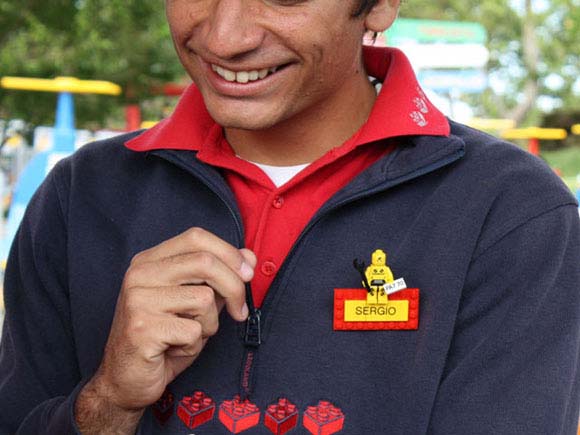What LEGOLAND® Borrowed From Disney (and you can too)
I just returned from a family vacation in San Diego, California. My two daughters love their LEGOs®, so making the trip to LEGOLAND in Carlsbad was a high priority.
LEGOLAND, in case your not familiar with it is an amusement park based on, you guessed it, LEGO bricks. I have to tell you that if you ever played with LEGO bricks as a kid (or even as an adult) LEGOLAND is very neat place to visit.
My favorite part was the whole section dedicated to LEGO-versions of world landmarks, including New York City, Las Vegas, and Washington D.C. Built with tens of thousands of LEGO pieces, each miniature replica was amazingly accurate.

The U.S. Capitol Building
Never quite able to turn off my marketing mind, what I found even more interesting was how LEGOLANDborrowed an idea from Disney and applied it to their business.
If you’ve been to a Disney theme park, you know the hyper-mania associated with their collectible pins. Kids and professional collectors roam the parks trading and seeking out the most collectible Disney pins.
While Disney will not disclose just how big this business is, it’s safe to assume it runs in the tens of millions of dollars. From something as simple as a pin.
So what did LEGOLAND do ( like any good marketer does)? They saw an idea that works in another business and they figured out a way to make it work in their business. In marketing terms, we call this “S&D’ing” or “swiping and deploying”, which is the ethical borrowing of ideas and transferring it to one’s own business.
LEGOLAND did not outright copy the Disney idea (which is not what we are talking about here and would be in violation of copyright and trademark laws). Instead their employees walk around the parks with special, limited-edition collectible Lego figures attached to their name badges and allow guest to trade with them.

Lego’s Version of the Collectible Pin
Like Disney, guests had to purchase the collectibles, but LEGO tweaked the process and limited guests to only five figures per purchase per day (building in scarcity) and they packaged the figures in a way that you didn’t know what figure you were buying (think grab-bag).

I asked one of the store employees (as I stood in line to buy my five figures) about the success of the collectible figures and they told me they were almost sold out of the first edition and that the second edition would be released in August. Long lines of people buying them was further evidence of their success.
The LEGOLAND lesson is a valuable reminder to all of us that we don’t always need to innovate and come up with new ideas for building the success of our businesses.
In fact, many times it’s much easier and more profitable to look around you and see what other sharp entrepreneurs and business owners are doing and figuring out how you can take their proven success, tweak it for your business and create a profitable new product or service for your business.

Hi Mike,
I saw some of your blog posts on the IMA membership site…
Would it be ok to re-post this post [and perhaps a few others] to two of my blogs: http://www.YourSuccessCheckLists.com and to http://www.discSalesStyles.com?
If yes, please send me an email to eg[at]egSebastian[dot]com
thanks!
PS – great site; great info!
What I have found with our present economy is when I send an Estimate on a job that I often don’t get a response from the person I have emailed it to or even a response to a follow up call. We have a method of finding these potential jobs and a great reputation in the market place here in Portland Oregon (over 23 years) with a large market share. We also have every price point available with products other than what I usually quote to them.
I am sure that there are many other companies like mine that have this type of poor response to Estimates.
Any suggestions on how to get a better response by email, follow up calls, or snail mail?
We purchased your Copy Doodles and use this a lot in our Direct mail as well.
Great post Mike! I like how you saw the similarity in marketing between legoland and Disney. Always great to learn examples of marketing from a wide variety of sources and industries. Thanks!!!
David Farr